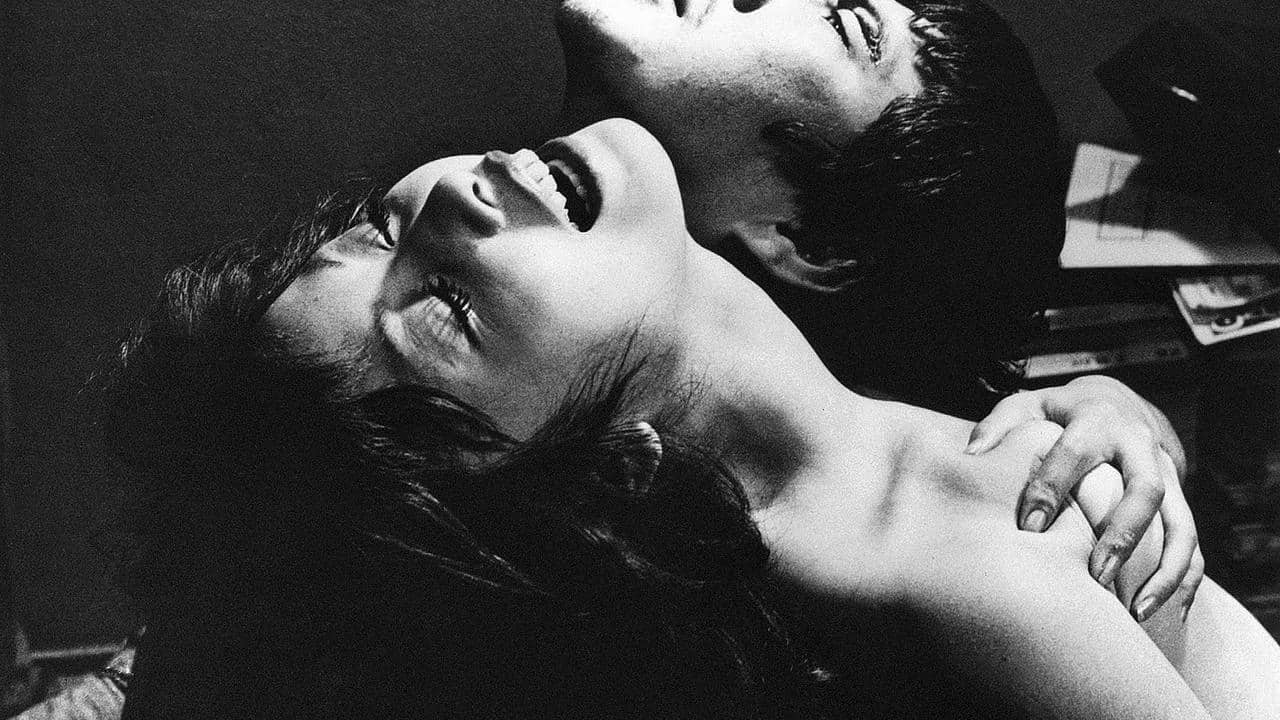Allow me to begin this review with a personal note. Among the plethora of books about (Asian) cinema I have read, this one is definitely one of the better ones, if not the best. The combination of research and context (just mentioning all the topics Jasper Sharp examines here would fill a small book), the quality of personal comments, the language, and the overall illustration of the FAB Press edition, which is filled with film stills, posters etc, including a rather impressive middle section as much as great front and back covers, are all top-notch, to the point that one would have to dig really deep to find any flaw in the book. Let us take things from the beginning though.
Buy This Title
The book begins ideally, as Sharp starts his narration by dealing with the history of nudity on film, the differences between art and pornography, the differences between Western and Japanese pornography, and more specifically for Japanese cinema, the difference between AV and pink films. The narration of Japanese film history also takes a large part of the beginning of the book, with the author starting in the way Donald Richie did in his own books, before branching to the pink genre. Additionally, he comments on how the aforementioned film historian and his generation considered the genre of lower quality, and essentially ignored it in their studies, for the most part. The terminology of the category, which includes the terms eroduction, sexploitation, before the most commonly accepted nowadays pinku (or pink film if you prefer) is also analyzed. Lastly, the first part of the book also deals with the history of Japan particularly during the 60's, and the ways those rather turbulent times shaped both pink and overall cinema.
This part brings us to the history of two of the most important and renowned representatives of the genre, Koji Wakamatsu and Masao Adachi, with Sharp dedicating rather large sections to both their common and individual lives and works, and the impact their films had both inside the country and internationally, as controversy seemed to accompany their every step. The Roman Porno series of Nikkatsu and the differences these films occasionally had with pink cinema is another rather interesting point, while the book then moves to the penetration of pinku movies to European cinema and vice versa (European erotic films in Japan), which are highlighted as rather significant. The story then continues to the participation of foreigners in Japanese movies, particularly European women, and Japanese productions that were shot overseas. This brings us to Nagisa Oshima and his French-produced “In the Realm of the Senses”, a film that is still surrounded by much controversy.

The turn to more violent productions that includes rape and torture much more intently is another topic examined next, along with the rising of AV video, while a later chapter deals with the directors and actors that started from pink films before they achieved critical and/or commercial success, with the names of Kiyoshi Kurosawa, Masayuki Suo, Yojiro Takita and Ren Osugi coming to the fore.
The labyrinth of the production information about the movies is also commented upon, with Sharp also focusing on Kokuei, Shintoho and a number of other companies, as much as institutions like PIA Film Festival and the role they played in the industry. One of the most interesting chapters involves the Four Devils (Kazuhiro Sano, Toshiki Sato, Hisayasu Sato and Takahisa Zeze) with the author analyzing thoroughly their differences and similarities, but also their life stories. The next group of iconic filmmakers, the Seven Lucky Gods of Pink (Toshiya Ueno, Shinji Imaoka, Yoshitaka Kamata, Toshiro Enomoto, Yuji Tajiri, Mitsuru Meike and Rei Sakamoto) are also examined in detail, with Sharp commenting on the ways their influence was much less significant than their predecessors, with their appearance essentially signaling the beginning of the end of the glory days of pink cinema.
Also rather interesting are the chapters that deal with the ways censorship has shaped the industry, and the various troubles pink filmmakers had to face with the authorities including a number of significant trials. Lastly, Sharp also deals with the women that were active behind the camera, with Keiko Sato's story as president of Kokuei emerging as one of the most interesting, of the plethora of portraits in the book.
This juxtaposition of elements of cinema, erotic movies, and political and social context with the focus on specific individuals that stood out for various reasons, and particular titles and events that are considered in the five decades the book covers results in an impressive amalgam that retains interest from the beginning to the end of the more than 340 pages. Furthermore, that Sharp manages to retain a chronological order despite the difference of context in the succession of chapters emerges as one of the book's best assets. Lastly, that the focus is more on history, individuals and events than deep film analysis, allows “Behind the Pink Curtain” to be easier to read, adding to the entertainment the tome offers.
Sharp's language is simple, to the point, and highlights a rather rich vocabulary that is particularly evident in the plethora of different words used to express parts of the human body and sex scenes, an element that is frequently interspersed with much humor.
Reading some books can be the equivalent in having a trip, and “Behind the Curtain” is definitely one of those titles, as it provides a captivating tour through the previously unknown history of Japanese Sex Cinema.















